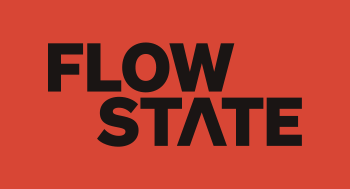Optimising performance: practice Or learning?
Undertaking training, often multiple times per week, to improve performance is common in sports, the performing arts, the military as well as emergency responders in the police, fire and ambulance services. In addition, the aviation industry along with medical trauma and surgical departments undertake regular training to grow the human performance capabilities of their staff.
Although the specifics and context vary, the main factors I consider when designing a training session for elite-level athletes have huge crossover to the training and development of people across industries and work sectors. I believe that the aim of training is to enhance the capability of the participant(s) by continually refining, growing and developing their skill sets. If you, like me, are trying to increase the performance potential of yourself, or others, this article will be of interest.
One question that is often debated, certainly in a sporting context, is whether a training session, or specific activities within an entire session, is focussed on practising existing skills or learning of new skills. In elite sport even although an athlete may possess a highly advanced skill set there is a continuous push for further improvement and the acquisition of new skills every day, week, month and year.
When you assess yourself, the organisation you work for or the industry you work in, is staff development over the short, medium and long-term prioritised highly? If the answer is yes, then great. Now you need to consider if the training and development process is optimised. If the answer is no, then great. You have immediately identified an area of growth that will lead to a potential performance improvement.
For a while now I have considered ‘Practice’ as being the training time allocated to the execution of existing skill sets within a known and predictable performance environment. This form of training will include a high proportion of rehearsal type activities with little, if any, new or complicated tasks. As participants will generally experience very high success rates in task completion this training is perfect for rehearsing specific skills, routines or tactical strategies as they complete their final preparations for a “competitive” outing. ‘Practice’ sessions should instil confidence and a high perception of one’s readiness to perform.
FOR ME ‘PRACTICE’ IS THE TRAINING TIME ALLOCATED TOWARDS PERFORMING IN MOMENTS OF CERTAINTY.
In contrast I consider ‘Learning’ as training that is highly challenging and promotes neuroplasticity in the brain. The objective is to arm participants with new skills, knowledge and attributes that grow their ability to perform in evolving and challenging performance environments at some time in the future.
Here are some examples of how you can create a ‘Learning’ training environment. The session could challenge participants on multiple levels such as the deliberate manipulation of situational context, pressure, emotional state, physical readiness and/or task difficulty. Additionally, working memory, attention and concentration could be overloaded to increase complexity. For the participant this dynamic and apparently chaotic training environment will stretch them beyond their current capabilities.
Repeated exposure to appropriately progressed ‘Learning’ sessions will lead to new skills being developed alongside an improved ability to perform existing skills under more complex, challenging and pressurised conditions. Either way you develop an increased performance potential.
FOR ME ‘LEARNING’ IS THE TRAINING TIME ALLOCATED TOWARDS PERFORMING IN MOMENTS OF UNCERTAINTY.
For people interested in human high-performance, blending ‘Practice’ and ‘Learning’ activities into their development program is key. Remember if you fail to prepare in your training then be prepared to pay the price during performance.
If you would like to gain a competitive advantage, delve deeper into this subject and learn how we can support your training to prepare with an optimal balance of ‘Practice’ and ‘Learning’ please visit the Flow State website at www.findyourflow.co.nz
Photo by paul wallez on Unsplash
